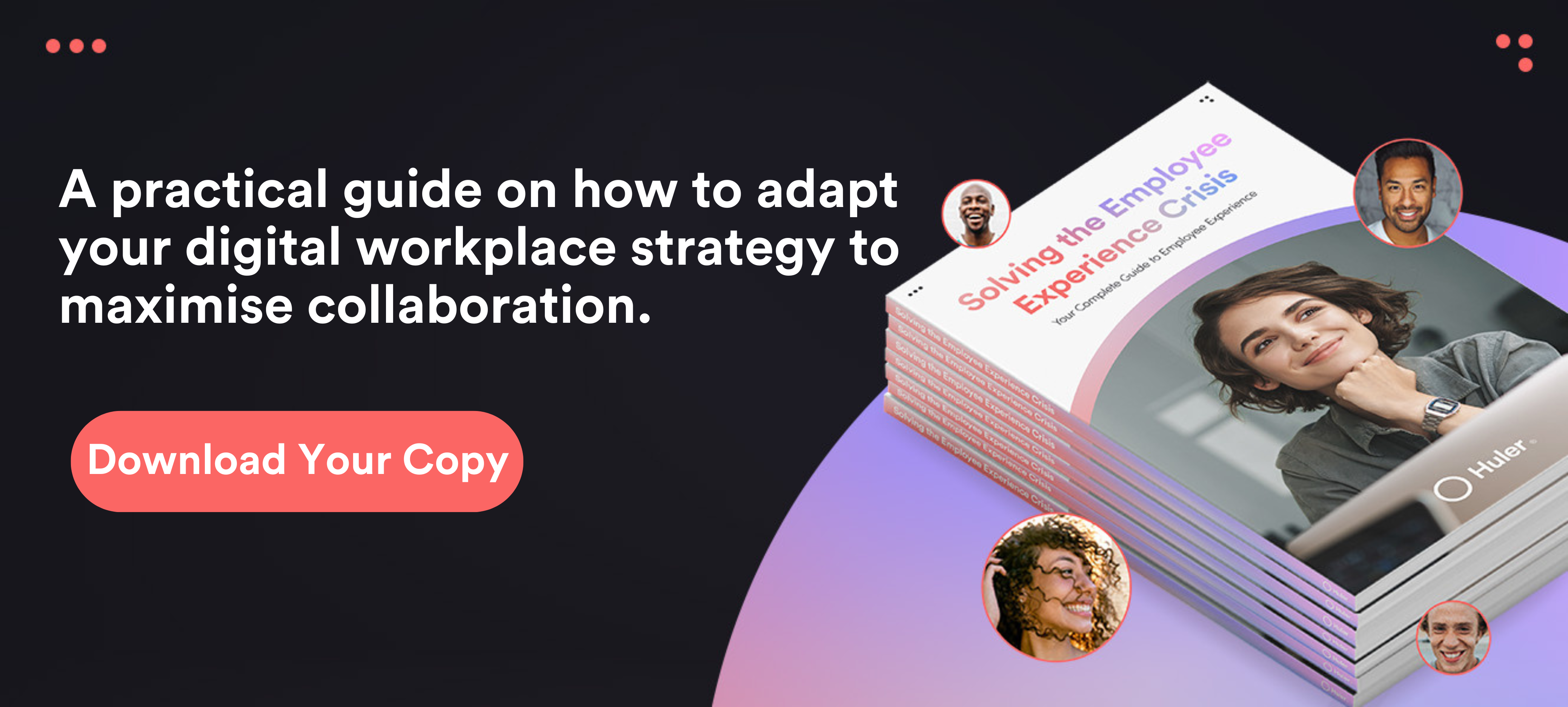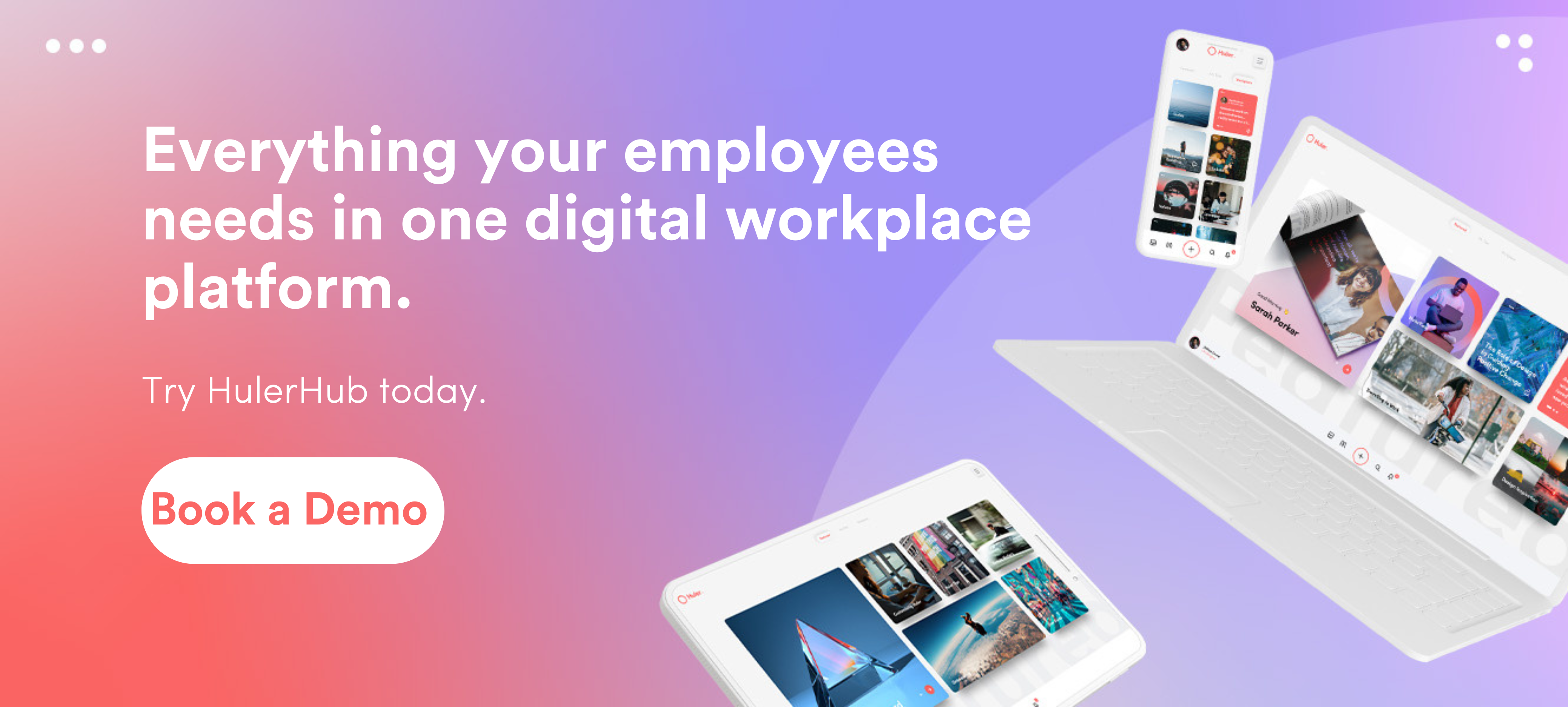The workplace has undergone a revolution. While the transition to hybrid and remote working was already underway, that process was massively accelerated by the pandemic, and shows few signs of slowing down.
However, organisations that weren’t prepared to transition into digital-first ways of working have found it difficult to retain ‘old’ ways of working in a new world. More than ever, your digital workplace is your workplace, and that raises the stakes when it comes to designing effective digital experiences.
Here, we’re going to explore the digital workplace in detail and help you build a virtual environment able to handle complex issues such as communication, project management and employee engagement in a remote, hybrid and in-office environment. But first, let’s start with some definitions…
What is a Digital Workplace?
Essentially, digital workplaces are a virtual version of traditional in-office environments, updated and optimised for the modern working world. They facilitate collaboration, communication and productivity through digital applications, websites, and cloud computing, where this would have all once taken place face-to-face.
Digital workplaces vary, depending on the environment they’re designed to create. This might be a customised email and messaging service at one end of the scale. On the other end, it could be an entire custom-designed workplace environment or intranet with multiple uses – being the centralised hub for a whole company’s workflow.
To learn more about digital workplaces, read our blog: What is a Digital Workplace?
Benefits of an effective digital workplace
An effective digital workplace can provide benefits to both individuals and the business as a whole. Some of these key benefits include:
- Increased flexibility: Building a digital workplace enables people to work when and where they want, improving flexibility and workplace experience.
- Enhanced communication: Digital communication enables people to connect from across the globe, by using tools that simplify the ways in which they collaborate and share information.
- Increased productivity: Curating an effective digital workspace provides faster access to the right applications and resources in both a remote and in-office environment.
- Streamlined recruitment and increased employee retention: Easy access to digital tools simplifies training and creates a better workplace experience, improving retention.
- Reduced costs all round: The ability to embrace remote and hybrid working can reduce office overheads and employee costs, helping you deliver better outcomes for less.
Fundamentally, an effective digital workplace improves employee experience, and helps drive engagement. So much of what we do at work is digital anyway that this goes beyond remote and hybrid staff to include office-based employees as well.
Suggested reading: If you want to learn more, check out our article all about the benefits of a digital workplace.
How to achieve the perfect digital workplace
Creating an effective digital workplace environment is not an easy task. The below strategies can help your business create a productive, fun, and engaging digital workplace that your employees will love.
Assess the tools you have… and get rid of the ones you don’t need!
You may find that you have X number of expensive software and applications you are paying for, and no one is using them or you find they no longer work as effectively in your environment. These applications cost your business money and complicate your digital workspace with virtual clutter. Equally, you could have super useful tools that no one really knows about because they are hidden and need to be effectively integrated into your workflows.
Work out which tools are actually being used by your team to find out which ones are valuable and which ones need to go. As an extra step, you can look at replacing existing tools with new ones that align with your businesses needs and goals more effectively.
It’s not always possible to just use “one tool”. Different applications are ideal for different tasks. Finding ways to simplify access to the right tool at the right time is an equally valid solution. Consider building a cloud-based hub that provides access to the tools you use, and includes quick search functions to find what you need at a moment’s notice.
Given that businesses use an average of 80 SaaS applications,¹ most companies can save a lot of time by making these applications more accessible. Streamlining and simplifying access to critical documents, resources and applications will improve workflows as well as simplifying the onboarding process.
Encourage new ways of internal communication
Emails are old, inefficient, and overly formal at the best of times. Create a more informal, collaborative work environment with your employees by embracing direct messaging services like Slack and Microsoft Teams.
These new, up-to-date messaging services provide a more dynamic and fast-paced form of communication, with messages likely to be read and replied to far quicker than emails.
It can also work as a hybrid communication system as you may find that emails still have their place in your organisation. They can be used for non-urgent company updates, while Slack or Teams are used for more urgent, project-based messages.
Suggested reading: For more information, check out our blog all about how to improve internal communication in your organisation.
Gamify your workspace
One of the many benefits of the hybrid working revolution is that the workplace can be reinvented as a fun, more interesting employee experience. Gamification is the use of game elements and mechanics (such as rewards, levels, personalisation, and leaderboards) in non-game contexts.
It can be an effective way of achieving productivity and engagement. Gamification helps involve employees, creating a healthy sense of competition and making work feel less like work.
Go mobile
The workplace revolution hasn’t just changed where we work, but when we work. As a result, you don’t necessarily need to constantly be glued to your PC or laptop screen to be productive. Having an optimised mobile solution where you can stay on top of work-related communication allows for increased employee freedom, letting you go to get an afternoon coffee without worrying about missing a message.
Statistics from an iPass survey show how integrated work is becoming in our day-to-day lives. 84% of mobile workers check their phones in bed.² Realistically, the “always-on” mentality of the modern workplace isn’t healthy. Taking breaks, finding balance and enjoying life are all critical to productivity in the long-term. However, when used right, mobile technology can help you do just that by making it possible to remain connected while introducing flexibility into your life.
Empower your employees with independence
Encourage a two-way dialogue and overcome a strict and hierarchical business. Each employee needs to be able to organise their digital workplace to optimise their specific needs. The above strategies can help empower your workforce through a digital workplace.
What you need is a digital hub in which individuals can curate their own personalised view, with links to what is used most. You also want administrators to be able to share critical information and views to ensure that nothing important gets overlooked.
The future of work lies within an effective digital workplace
Clearly, the future of work lies in creating and adopting a successful digital workplace. This should be centred around providing employees with a positive work experience to increase productivity and promote general well being.
The link between employee wellbeing and productivity is increasingly being illustrated as we see the impact they have on one another. Actively helping employees thrive through the steps shown above increases a sense of self-worth and career independence, driving up talent attraction and employee retention, a win for everyone involved.
In order to redefine digital workplace experiences, we built a digital employee experience platform. HulerHub, as it’s called, provides a single access point to your entire digital workplace. It creates a set of smart tiles that provide access to all of the different applications used in your business, and was designed to enable all of the outcomes discussed here, with features including:
- Organised content: Through personal and shared collections, all your files and deep links can be brought together in a single, easily navigable space that looks good and can be branded to match your business.
- Accessible: The platform can be accessed from your desktop, tablet and phone, meaning you can work from anywhere at the touch of a button.
- Notification centre: A centralised notification centre means that nothing will be missed. All of them are accessible in a single, visually intuitive display.
- Customisable: Arrange your content in a way that suits you best, with all your most-used tools right where you need them.
Your digital workplace should be intuitive and fun. It needs to capture your culture, provide simple access to key resources and help facilitate communication within an environment that provides a consistent digital employee experience. This is what we build HulerHub to do, but just don’t take our word for it. Book a demo today and find out how easy it is to transform your digital workplace experience and build a business that’s ready for the future of work.
² iPass Mobile Workforce Report Finds the End of Downtime as Smartphone and Tablet Usage Rise – iPass







